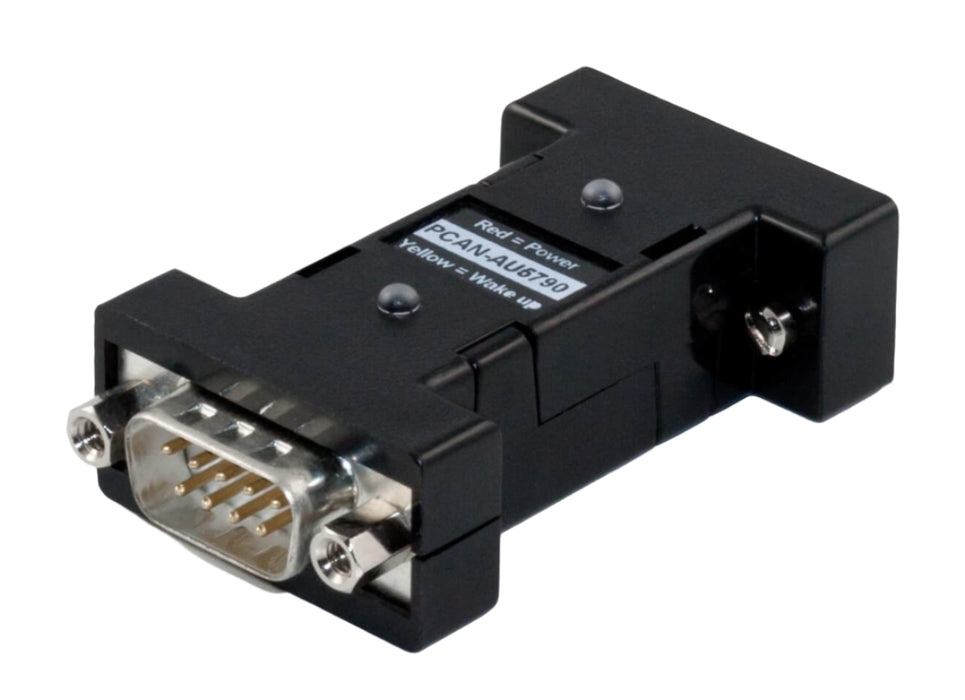
Establishes a connection between a High-speed CAN bus (ISO 11898-2) and a Single-wire CAN bus (SAE J2411)
One of the most important potential applications of the bus converter.
The PCAN-AU5790 bus converter, A simple connection between a PEAK CAN interface (e.g. PCAN-USB) and a Single-wire CAN bus.
- Philips AU5790 Transceiver (others available on request)
- Adapter features a plastic housing
- Transfer rates up to 125k Baud
- Operating modes can be switched for the Single-wire CAN side via a sliding switch.
- Operating mode LED
| Power Supply | +5 V DC, at least 150 mA (via HS-CAN port) +12 V DC additionally (via SW-CAN port), if available current strength of the 5-Volt supply < 150 mA |
|---|---|
| Power Consumption | 20 mA average, 120 mA maximum |
| High-speed CAN | ISO 11898-2 Compliant to CAN specifications 2.0A and 2.0B Transceiver: Philips PCA82C251 Sub-D socket (pin assignment according to CiA DS 102) Termination: 120 Ω |
| Single-wire CAN | SAE J2411 Transceiver: Philips AU5790 Sub-D plug Termination: 5.1 kΩ Operation modes: Normal, High-speed, Wake-up |
| Transfer rate | max. 83.3 kBit/s |
| Dimensions | 63 x 34 x 19 mm (2 1/2 x 1 5/16 x 3/4 inches) |
| Weight | max. 30 g (2.5 oz.) |
| Operating temperature | 0 – 70 °C (32 – 158 °F) |
| Storage temperature | -40 – +100 °C -40 – +212 °F |
| Relative humidity | 15 – 90 %, not condensing |
| Wake-up LED (yellow) | Pulse width: > 0.5 s Time delay signal: > 5 μs (at 11-Volt pulse) Threshold signal: > 8.2 V |
| PCAN-AU5790 manual |
| PDF Manual in English |
Establishes a connection between a High-speed CAN bus (ISO 11898-2) and a Single-wire CAN bus (SAE J2411)
One of the most important potential applications of the bus converter.
The PCAN-AU5790 bus ...


